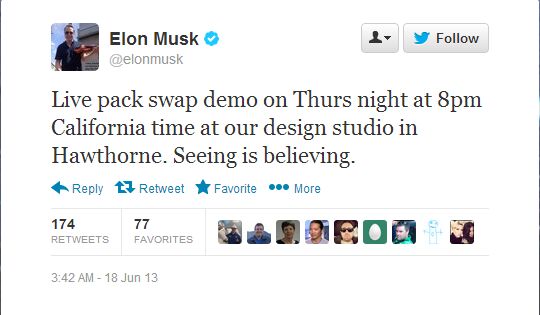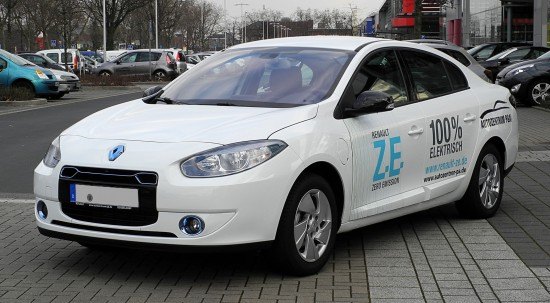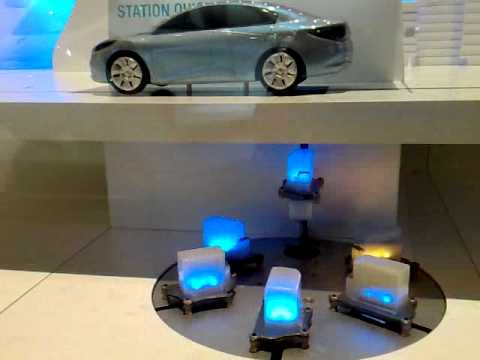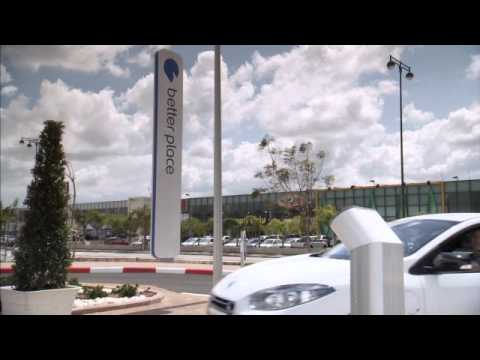#BatterySwap
Will Thieves Target Tesla Battery Packs?
While watching the video of Elon Musk demonstrating Tesla’s new battery swap mechanism that will be installed at the EV company’s ‘supercharger’ stations (Musk prefers to call them “Tesla stations”) I remembered something that Tom Wolfe wrote about air-cooled Volkswagens in his 1968 compilation, The Pumphouse Gang.
Video: Tesla's Battery Swap In Action
Those of you wondering exactly how Tesla’s battery swap technology works, here’s your answer. The fully automated system, said to be akin to a carwash, supposedly takes just 90 seconds. To prove the point, Tesla did a side-by-side comparison with an Audi A8 at a fuel pump. It should be noted that the A8 has an enormous 23.8 gallon tank. As Bertel points out, the battery swap system isn’t cheap – but for the folks who are buying a Model S anyways, it’s not a big deal.
Tesla Confirms Battery Swap For Model S
Tesla’s long-rumored battery swap technology will get its first reveal Thursday night, according to a Tweet from Elon Musk himself.
Ghosn Deals A Blow To Better Place
Beleaguered EV start-up Better Place faced yet another blow this week, as Nissan CEO Carlos Ghosn declared that rapid-charging, not swappable batteries, will be the predominant charging technology for EVs.
Better Place CEO Resigns, Division's Future Looks Bleak
Better Place Australia’s future is in serious jeopardy after its CEO resigned, amid plans to restrict new investment to Israel and Denmark, Better Place’s main markets.
In The Battle For The Post-Oil Auto, Big Investors Are Shooting The Moon
As Bertel pointed out earlier today, peak oil is here: the graph above is not from some fly-by-night EV firm, but Toyota, an auto industry giant. What years of environmental and security arguments failed to communicate, economics is now explaining with little difficulty. Namely, that demand for oil is growing faster than supply, forcing developed economies to look beyond oil for future growth. And, as you might expect from a conservative player in a conservative industry, Toyota argues that the solution to this growing disconnect is a portfolio of drivetrain technologies. But what if, instead of trying to adapt an existing business model to the new oil reality, you built a new business model from the ground up? That’s exactly what Project Better Place is trying to do, and the contrast between its approach and that of Toyota is fascinating to anyone interested in the future of the automobile.
Global EV Demand Stuck At 2%-4%. Unless…
Of all the persistent questions faced by the auto industry in these tumultuous times, perhaps the most pressing is: how many consumers would actually consider buying an electric car? There’s no single answer to this question, but we do have one new perspective on it today, courtesy of a study by Deloitte [ PDF] which analyzed potential EV demand around the world through some 13,000 survey respondents. The major takeaway?
The reality is that when consumers actual expectations for range, charge time, and purchase price (in every country around the world included in this study) are compared to the actual market offerings available today, no more than 2 to 4 percent of the population in any country would have their expectations met today based on a data analysis of all 13,000 individual responses to the survey.
That assessment is well in line with other studies we’ve seen, most of which estimate global EV demand at somewhere between one and five percent of the market. But because potential EV demand has a lot of moving parts, from government regulations to the state of EV technology, there’s more to the study than that conclusion alone…
The Case For Better Place: Shai Agassi Addresses The APEC Transport/Energy Ministerial Conference
TTAC’s Twitter followers already know that I’m at the 2011 APEC Transport/Energy Ministerial Meeting in San Francisco, rubbing elbows with key decision-makers from the world of energy and transportation across the Asia-Pacific region. Earlier today I had the opportunity to sit down with Better Place CEO Shai Agassi, the intense, formidable CEO of Project Better Place. I’ll be writing about that conversation shortly, but many of the major points are covered in the speech Agassi gave shortly afterwards to assembled ministers, media and businesspeople. The speech boils down Better Place’s hugely ambitious plan to tackle one of the most complex challenges the world faces: transportation’s dependence on oil. If you’re looking for an Al Gore-style “green” speech, keep looking. Agassi tackles the problem from an economic and technological approach, and he makes a case that is well worth about 17 minutes of your time.
If you’re not familiar with Better Place, you can read some of TTAC’s coverage of the battery-swapping, network-managing, mileage-leasing project at our Project Better Place tag here (much of it on-the-ground reporting from Tal Bronfer, who has been following its rollout in the Israeli market). A comparison of battery swap to other EV business models can be found here, and a study of EV grid management issues can be found here.
Better Place Announces Business Plan, Signs Israeli Lease Deal
One of the biggest clouds hovering over Better Place’s venture in Israel – and globally – is what stands behind the well-prepared presentations and thoroughly thought out, customer-oriented marketing. What makes the seemingly adventurous venture appealing to the business hounds investing their best capital in it? Such questions from journalists are usually answered with a neat smile, a corporate joke and a dry statement.
While Better Place still isn’t revealing its global business plan, it finally sheds some light on the numbers behind its Israeli venture, as part of a worldwide roadshow in preparation for the company’s upcoming $300 million capital raising.
Better Place Opens First European Battery Swap Station, Expands To Australia
Though it doesn’t get the play it deserves in the auto media, Project Better Place is one of the most ambitious, potentially disruptive plays anywhere in the world of cars, uniquely positioning itself to eliminate the biggest shortcomings of electric vehicles. TTAC was on hand when the “end-to-end” EV services firm opened its first battery swap station in Israel, and now the firm has launched its first European swap station in Denmark. Better Place’s single model, the Renault Fluence Z.E won’t be widely available in either of the two initial launch markets until later this year, but having sold over 70,000 of its initial order of 100k units from Renault, Better Place is keeping its foot on the gas… er, juice.
Better Place Prices "Range Anxiety"-Free EVs In Israel. But What About Resale Anxiety?
In the last time we heard from Better Place – a little less than two months ago – we’ve witnessed the unfolding of the company’s first functional battery swap station. And yet we were left with one big question mark hovering over the entire project: the price for the end customer.
This question is particularly crucial for the Israeli market, where the vast majority of people owns a car and uses it for their daily commutes and where gas prices are amongst the highest in the world – about $8.3 per gallon. And while the company has already unveiled its prices for the Danish market, it hasn’t revealed the price of the car and monthly subscription for the Israeli market – until now.
Inside Israel's First Battery Swap Station
When Better Place launched their Visitor Center in Tel Aviv, the attending journalists’ fingers couldn’t keep up with all the numbers and the promises flogged by the company chiefs: tens of battery switch stations to be built, hundreds of charging stations to be deployed and a thousand cars to be sold to Israeli customers each month.
Just over a year has passed since these statements made air, and in typical Israeli fashion – most of the goals were not met. Despite promising to begin delivery of cars in the beginning of 2011, Better Place has not sold a single car over the four months that passed since New Year’s Eve. And the number of battery switch stations built in Israel was – you guessed it – exactly zero. Until now.






















Recent Comments